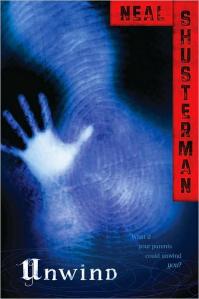Plot Summary: The world has slowed down considerably. Since the world’s oil supply has run out cars and electricity are things of the past – people must survive on their own wits and by a new set of rules. Robert Earle still lives in his home in Union Grove, New York. While life is far from perfect, he has established a way of life that is sustainable for now. Having lost his wife and son, Robert lives a somewhat solitary existence as he manages his own survival. His town is in the midst of being reclaimed by nature and by the opposing factions that are forming as the dust settles from the environmental and societal meltdown. When a new religious group moves into town and takes over the old town high school, the very delicate and tenuous balance that has existed in Union Grove threatens to be shattered.
Critical Evaluation: While World Made By Hand is indeed a very adult book, it will be a perfect read for intellectually curious and forward-thinking teens. Young adults who have made their way through the myriad dystopian books written for teens will appreciate the academic and thoughtful nature of this book. Kunstler, who has written extensively about the coming environmental catastrophe, uses his keen eye to imagine a world changed by the science he has studied. The book is scary but not far-fetched and will make for fascinating conversations with teens about over-consumption of finite resources and the repercussions of that behavior. Additionally, Kunstler opens the door to thinking about power corruption, religious immorality and human nature. While many teen dystopian fiction books place the action in a distant and vague future, Kunstler demands that the reader acknowledge that his vision is in the very near future, making for a far more thought-provoking and personal reading experience.
Reader’s Annotation: For anyone who ever wondered what it would be like to live without rules, without modern conveniences, or without the societal norms we’ve all become accustomed to…Kunstler shows us the bleak future that might allow us to see it for ourselves.
Author Information: “Mr. Kunstler was born in New York City in 1948. He moved to the Long Island suburbs in 1954 and returned to the city in 1957 where he spent most of his childhood. He graduated from the State University of New York, Brockport campus, worked as a reporter and feature writer for a number of newspapers, and finally as a staff writer for Rolling Stone Magazine. In 1975, he dropped out to write books on a full-time basis. He has no formal training in architecture or the related design fields.
He has lectured at Harvard, Yale, Columbia, Dartmouth, Cornell, MIT, RPI, the University of Virginia and many other colleges, and he has appeared before many professional organizations such as the AIA , the APA., and the National Trust for Historic Preservation.
He lives in Saratoga Springs in upstate New York.”
Genre: Speculative fiction
Curriculum Ties: Environmentalism, Limited resources, Sustainability, The end of oil
Booktalk Ideas: Adult titles for teens, Disaster, Dystopian society
Reading Level/Interest Level: Crossover/Grades 10 and up
Challenge Issues and Plans: This book contains strong violence and some sexual situations. The themes of environmental catastrophe and the end of oil might be objectionable to some parents.
If the book was challenged I would:
- I would ensure that I am familiar with the material, including any part that might cause concern to parents/patrons.
- I would actively listen to the concerns of the parent/patron in an effort to fully understand their point of view. I would ask clarifying questions and avoid any judgmental language.
- I would offer my reasons for including the material in a non-confrontational but matter-of-fact manner.
- I would offer a list of reviews and awards that informed my decision to add the material to the collection.
- I would draw the parent/patron’s attention to ALA’s Library Bill of Right.
- I would have handy for perusal my library’s collection policy.
- If the parent/patron wished to continue with the challenge, I would offer an official challenge form that would be submitted to the library’s (or school’s) board of directors.




